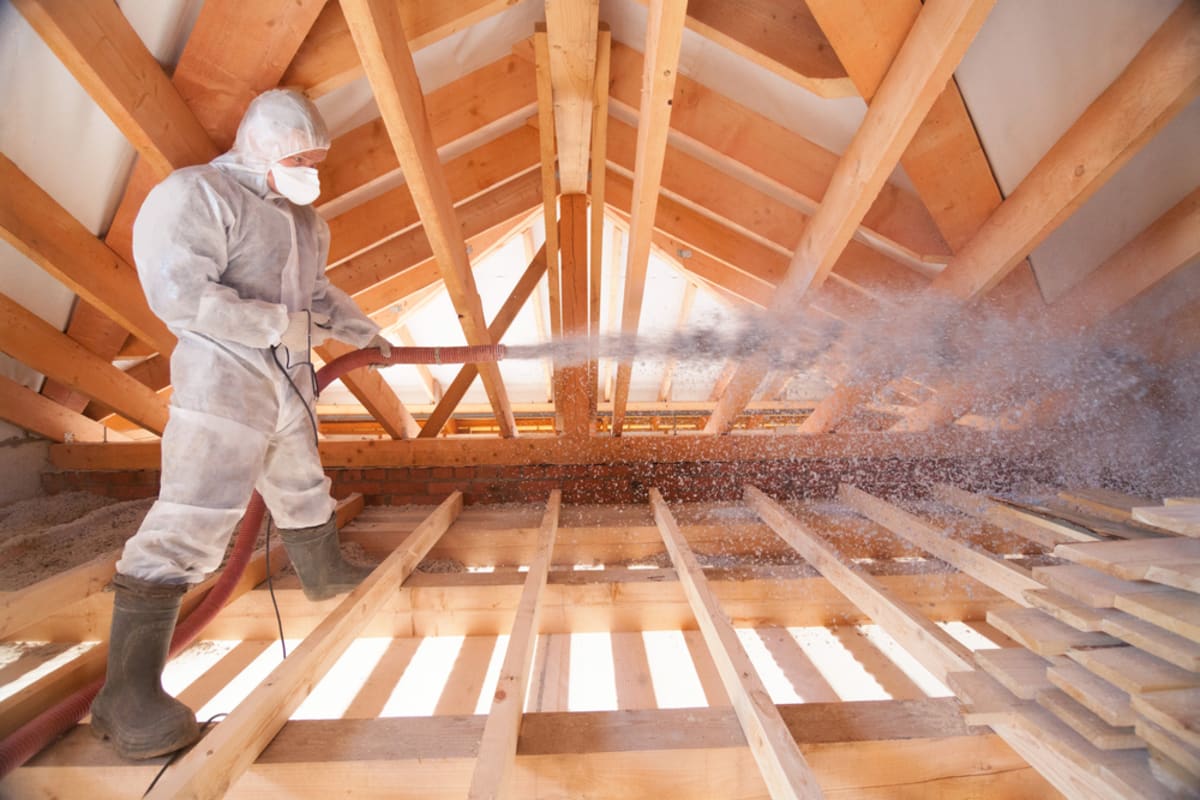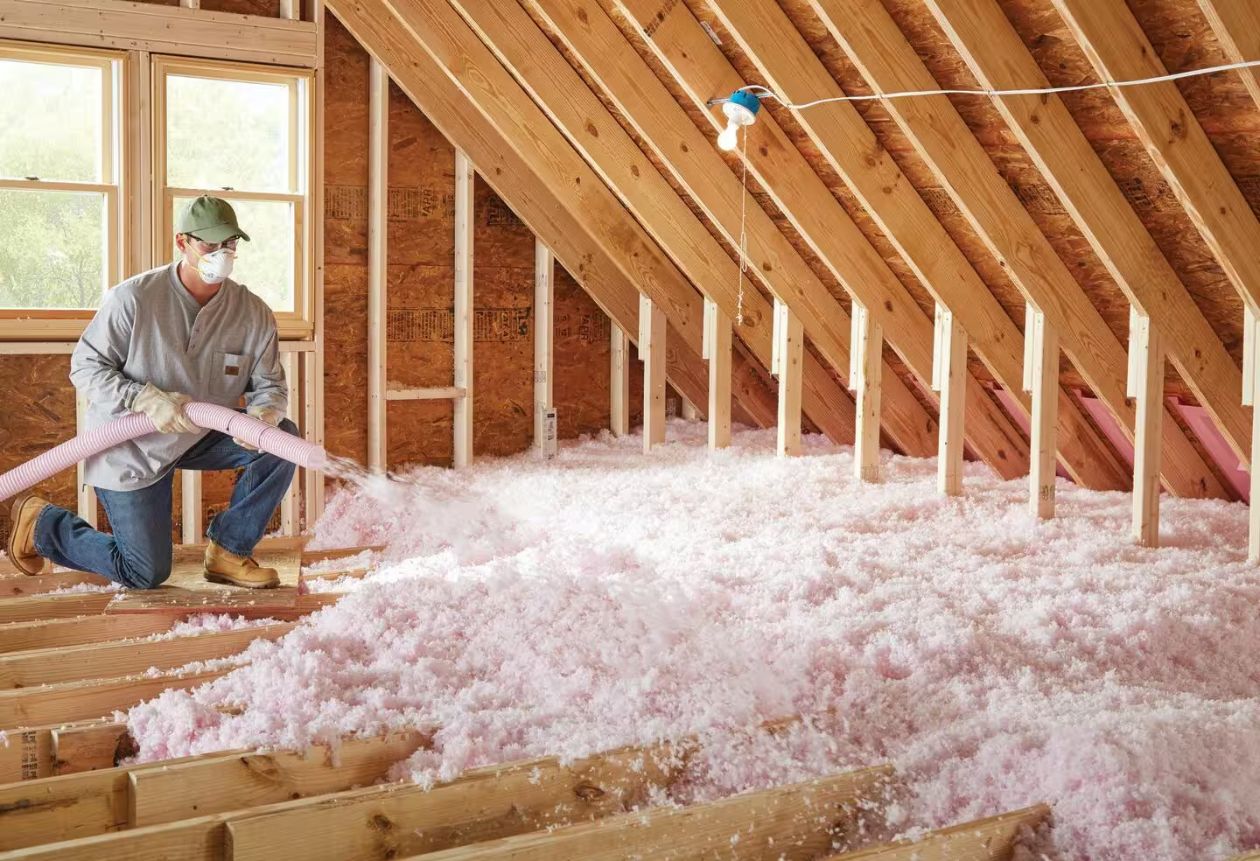Blown-in insulation is commonly used in residential and commercial buildings to boost thermal performance and energy efficiency. But one of its less discussed strengths is how it improves air sealing performance—a factor critical for reducing energy waste, moisture issues, and indoor discomfort. This article explains how blown-in insulation functions as an air-sealing tool, where it outperforms traditional methods, and what to know before hiring an expert spray foam insulation company.
Why Air Sealing Matters for Building Efficiency
Air leakage is a major source of energy loss in both homes and commercial buildings. Sealing these leaks improves indoor comfort, reduces energy consumption, and supports HVAC system performance.
What Is Air Leakage?
Air leakage refers to uncontrolled airflow through gaps and cracks in a building’s envelope. It typically occurs around:
- Wall penetrations for plumbing or electrical
- Attic hatches and recessed lighting
- Wall-to-floor and wall-to-ceiling connections
- Ductwork and HVAC system junctions
How Air Leakage Affects Energy Use
Even small leaks can have a major impact on energy efficiency:
- Heated or cooled air escapes, requiring more energy to maintain temperatures
- Moisture enters, leading to potential mold and structural decay
- Drafts compromise occupant comfort
Blown-in insulation mitigates these issues by filling irregular gaps where rigid materials cannot.
How Blown-In Insulation Enhances Air Sealing
Blown-in insulation—especially cellulose and fiberglass—acts as both an insulator and a form of air barrier when applied densely and correctly.
Dense-Pack Cellulose: Air Sealing at the Cavity Level
Cellulose insulation, when densely packed into wall or ceiling cavities, restricts air movement:
- Fills small cracks and joints that sheet insulation leaves open
- Limits convection loops inside walls and attics
- Reduces stack effect-driven leakage in multi-level buildings
Loose-Fill Fiberglass: A Better Fit for Attic Floors
When installed properly, blown-in fiberglass provides effective coverage over attic floor cavities:
- Creates a continuous thermal blanket
- Reduces leakage from recessed lights and ceiling penetrations
- Works best with attic air sealing steps like sealing top plates or duct boots
Hybrid Approach: Air Sealing + Insulation in One Step
In retrofit scenarios, contractors often pair air-sealing caulks or foams with blown-in insulation. This combined strategy:
- Addresses large and small gaps
- Increases insulation effectiveness (R-value)
- Delivers consistent performance in irregular spaces
Where Blown-In Insulation Performs Best for Air Sealing
Not all areas benefit equally. Strategic placement of blown-in insulation enhances building performance and improves return on investment.
Attics: The Primary Leakage Point
Attics are responsible for a significant portion of total air leakage in a building:
- Gaps in framing around light fixtures, vents, and hatches allow conditioned air to escape
- Blown-in materials settle into crevices that batt insulation cannot cover
- Dense layers reduce radiant heat gain and air movement
Wall Cavities in Older Buildings
Existing buildings often lack proper wall insulation. Dense-pack cellulose is commonly used in these retrofit applications:
- Applied through small holes drilled into the wall cavity
- Offers better contact with framing members and uneven voids
- Helps bring older buildings up to modern energy standards
Floors Over Crawlspaces or Garages
Air leakage through floor systems introduces outdoor air and contaminants:
- Dense-pack cellulose or fiberglass reduces movement through subfloor
- Improves indoor air quality by limiting airflow from garages
- Reduces cold floor surfaces in winter
Blown-In vs. Other Insulation Methods for Air Sealing
How does blown-in insulation compare to spray foam or traditional batt insulation in air sealing capacity?
Key Installation Considerations for Air Sealing Performance
Getting the full benefit of air sealing from blown-in insulation depends on installation quality and material choice.
Air Sealing First, Then Insulate
A layered approach works best:
- Seal major gaps and penetrations with caulk, foam, or gaskets
- Apply dense-pack cellulose or fiberglass insulation for added air sealing
Use Dense-Pack Methods in Enclosed Cavities
Dense-pack cellulose provides better air-sealing than loose-fill when installed to manufacturer specifications:
- Typically installed at 3.5–4 lbs per cubic foot
- Requires proper blowing equipment and trained installers
Verify Coverage and Density
Quality assurance ensures long-term performance:
- Thermal imaging after installation identifies weak spots
- Depth markers and coverage charts guide application
- Voids or uneven layers reduce effectiveness
Common Question: Is Blown-In Insulation an Air Barrier?
Blown-in insulation isn't a true air barrier by definition, but in many applications, it acts like one when dense-packed or used with proper sealing techniques.
Key Points:
- It limits airflow through cavities
- It's not vapor-impermeable unless combined with a separate barrier
- It improves the overall building envelope's resistance to air infiltration
Conclusion
Blown-in insulation contributes more to energy performance than just thermal resistance—it plays a vital role in air sealing when applied correctly. Whether it’s dense-pack cellulose in wall cavities or loose-fill fiberglass in attic floors, these materials conform to irregular spaces and reduce hidden leaks that batt insulation misses. Pairing blown-in insulation with proper air-sealing methods during installation can significantly improve comfort, lower energy bills, and reduce HVAC load.
For retrofits, especially in older buildings, professional blown-in insulation contractor offer a practical way to upgrade air sealing without major reconstruction. Homeowners and commercial property managers looking to improve efficiency should consider a comprehensive approach that includes air sealing and insulation as a combined solution.
FAQs
Can blown-in insulation completely stop air leaks? Blown-in insulation reduces air leaks but doesn’t fully eliminate them unless used with air-sealing products like foam or caulk. Dense-pack methods offer higher air-sealing value.
Is cellulose or fiberglass better for air sealing? Dense-pack cellulose typically provides better air-sealing performance due to its tighter application and higher density, especially in wall cavities.
Does blown-in insulation need a vapor barrier? A vapor barrier may be necessary depending on climate and location. Blown-in materials like fiberglass are vapor-permeable, so pairing with a vapor barrier can help manage moisture.
Can blown-in insulation be added over existing insulation? Yes, it can be added to boost R-value and improve air sealing—especially in attics. Ensure existing materials aren’t compressed or wet before adding new layers.
How do I know if my attic needs better air sealing? Signs include drafty rooms, uneven temperatures, high energy bills, or visible gaps in attic framing. An energy audit or blower door test can confirm air leakage points.
Reviewer: Lily Johnson offered her feedback after reviewing this post. With 8 years in the spray foam insulation field, her suggestions centered around improving outreach to homeowners looking for quality insulation solutions.








Comments